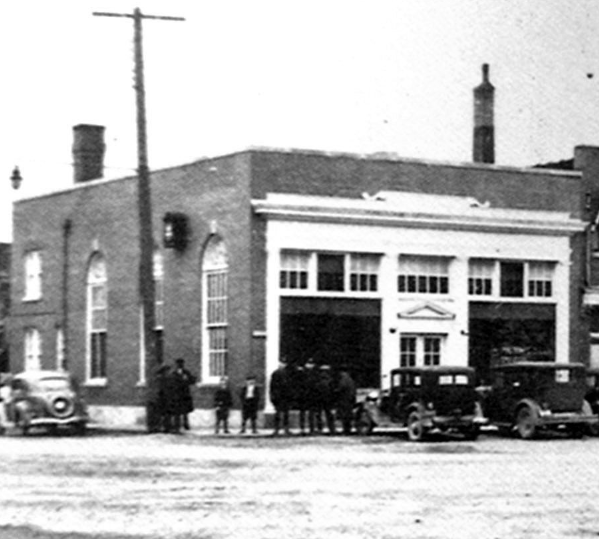Proven Asset
A Glance Back at Jefferson County Bank’s Local Impact Through the Years
Writer / Beth Wilder
Photography Provided
The early 1900s were a time of great progress in Jeffersontown, thanks to a group of incredibly civic-minded men who worked together for the advancement of the town, to bring it up to modern standards.
Their efforts brought many new improvements to Jeffersontown including electricity, subdivisions, a new school, the local Jeffersonian newspaper, the beginnings of a fire department, the Cumberland Telephone Company, and the Interurban, to name just a few. In fact, Jeffersontown was becoming so modernized that a 1904 Courier-Journal article commented that shortly after the Interurban connection to Jeffersontown was completed, Dr. Wells, who owned a pharmacy at the corner of town where El Nopal now stands, was overheard telling Squire McKinley, “The first thing we know they’ll be having a bank out here.” He was right.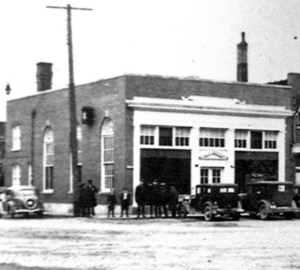
The Jefferson County Bank was organized and incorporated on January 18, 1904. Its first officers were H.N. Reubelt, president; John J. McHenry, vice president; and D. Price VanArsdale, cashier. The bank was originally housed in the Groves building, which stood on the corner lot now occupied by King Southern Bank, but in July 1904, the bank moved across the road and down the street into a newly-constructed brick building with a rather unique corner entrance, which still stands to the right of Jeffersontown City Hall.
The new building reportedly included features to help prevent fires and robberies. Despite this, in 1919, robbers managed to steal $6,000 worth of Liberty Bonds, jewels, cash and securities after using an acetylene torch to burn through a vault. The thieves escaped across the Ohio river. According to a November 20, 1919, article in the Courier-Journal, “several letterheads and documents, bearing the name of the Jefferson County Bank, were found scattered about the town” of Pekin, Indiana. There was no word on whether the thieves were ever captured.
A Proven Asset for Jeffersontown
That unfortunate robbery aside, the citizens of Jeffersontown were extremely proud of the bank. A state bank examiner even told the bank officers in 1911 that “you have a splendid institution here and I am glad to find it in such a flourishing condition.”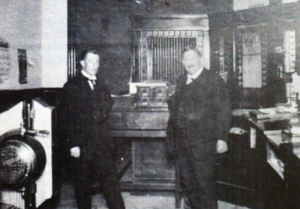
A 1910 Jeffersonian newspaper article compared statements of six banks in Jefferson County, and it was noted that all were doing incredibly well. The fact that the Jefferson County Bank was able to hold its own, especially while serving a primarily rural, farming population, speaks very well for its management and the trustworthiness and friendly attitude of its employees. The bank encouraged all Jeffersontown residents to save their money, stating that even the smallest deposits were welcome. When the new Jefferson County Bank building opened in July 1904, the Courier-Journal wrote that the residents of Jeffersontown were “a plain, poor people” who were “independent, respectable people,” many of whom managed “to make both ends meet on less than ten thousand a year.” Their willingness to place their hard-earned money in such an institution to help see it succeed showed the amount of faith and pride they had in their local banking institution.
Lest one think that Jeffersontown was full of nothing but paupers, that is far from the case. True, most of the local inhabitants did not have a great deal of money, but there were many entrepreneurs in the town who lived quite comfortably, and there were a small handful of residents that one might consider wealthy. One of these was the famed editor of the Courier-Journal newspaper, Henry Watterson, who was beloved by the people of Jeffersontown. Watterson was often known to peek his head into the office of Reubelt to see if he could talk.
Thanks to the support of Jeffersontown’s citizenry, the Jefferson County Bank prospered enough that by the 1920s, plans were underway to relocate the bank. On February 12, 1927, the bank reopened on the very corner of Main and Market streets (Watterson Trail and Taylorsville Road) where it began its existence. A one-story brick and stone-trimmed building was constructed, with a marble lobby and separate waiting rooms for ladies and gentleman. The new bank’s vault had a 17-inch-thick steel door that weighed 10 tons.
The Depression Sets In
The newly relocated bank did good business for a few years, but hard economic times overtook the country, and on September 24, 1931, the Jefferson County Bank was forced to close. Bank ledgers from that era show how property transfers were made from some of the poor farmers in town to the wealthier residents, and also how diligently the bank worked to pay back the many deposits that had been made in good faith. 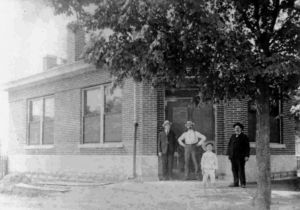
There was no “run” on the bank, but steady withdrawals prompted the bank’s closure until a complete audit could be made. On October 1, 1931, the Jeffersonian printed an article explaining to the public that the bank had “closed to protect its depositors,” and noted that debtors were still under obligation to pay back their loans, both legally and morally. It was pointed out that if people repaid their debts with the interest owed, those with savings accounts would readily be able to access their own money.
During the time the bank was closed, the only institution Jeffersontown had in the way of a public financial trading station was the local U.S. Post Office, run by May Easum and Mary Baumlisberger, who were kept very busy by the increased volume of business. The October 8, 1931, Jeffersonian remarked, “It is evident that people are beginning to appreciate, as never before, what those services supplied by a bank mean in convenience and material value to a community.”
Although the bank remained closed to the general public, officials still had to continue their job of collections. The costs required to operate a “dead” bank were as expensive as the costs of running a “live” one, and so the directors of the Jefferson County Bank had to begin liquidation. The longer it took to reorganize, the less chance there was for the bank to actually reopen its doors.
A Return for Investors
In January 1935 it was announced in the Jeffersonian that local banking facilities would be restored to Jeffersontown. The Bank of Middletown intended to open a branch office in the Jefferson County Bank building. The new local bank would be called the Jeffersontown Bank.
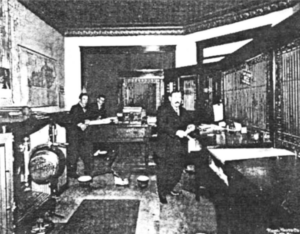 A.B. Wigginton, special deputy banking commissioner in charge of the Jefferson County Bank, negotiated the lease of the building by the Middletown institution. Vice president of the Bank of Middletown, C.H. Schrader, stated that “as neighbors and friends we are particularly happy that we have this opportunity to provide the local community with modern banking facilities.”
A.B. Wigginton, special deputy banking commissioner in charge of the Jefferson County Bank, negotiated the lease of the building by the Middletown institution. Vice president of the Bank of Middletown, C.H. Schrader, stated that “as neighbors and friends we are particularly happy that we have this opportunity to provide the local community with modern banking facilities.”
The Jeffersontown Bank showed an immediate increase in deposits, and the new bank became known for its courteous service, just as the old one had. For his part, Wigginton was lauded for operating the defunct Jefferson County Bank at a gain, rather than a loss, when he was forced to liquidate the original bank. He handled the trust well for the citizens of Jeffersontown.
The Jeffersontown Bank was later purchased by Liberty National Bank and opened as a branch on May 10, 1955. The branch continued to grow over the next 10 years, and in 1965 it was moved to a brand-new building at 10417 Watterson Trail, constructed specifically to house the bank and local post office.


